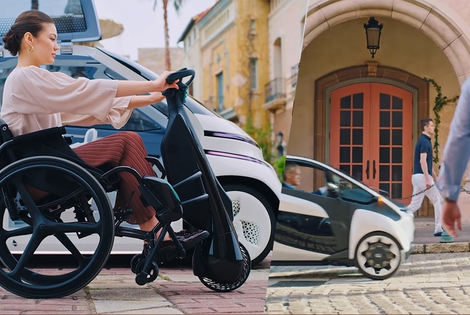
Milan has announced one of Europe’s most ambitious mobility schemes, known as Strade Aperte (open roads). Its goal is to reduce cars in phase 2 of the lockdown by increasing bike lanes and pedestrian areas.
As usual, Denmark, Netherlands and Sweden top the charts of the European Cyclists’ Federation (ECF), one of whose aims is to reduce by a half the number of dead cyclists in Europe by 2020. Italy, in spite of the number of bikes sold has increased by 6% in 2014, went down by two positions (from 15th
As usual, Denmark, Netherlands and Sweden top the charts of the European Cyclists’ Federation (ECF), one of whose aims is to reduce by a half the number of dead cyclists in Europe by 2020. Italy, in spite of the number of bikes sold has increased by 6% in 2014, went down by two positions (from 15th to 17th) position in ECF charts.
Here is a list of the records hold by each country:
Croatia, who has been listed in the charts for the first time, ranks 16th, just before Italy which ranks 17th. Slovenia moved from the 12th to the 7h position and Spain moved from the 23rd to the 18th position. Poland ranks 20th.
As far the European Cycling Challenge is concerned, the competition will end in a few days and three Polish cities rank first (Gdańsk, Wrocław and Warsaw), while Lodz ranks 7th. Rome ranks 4th in the main leaderboard (last year it ranked 3rd) with just few km less cycled than Warsaw. However, Rome figures at the bottom of the list of the best cycling cities (number of km per 1,000 inhabitants) where it ranks 22nd. Italy and Poland perform well in the main leaderboard but don’t get a high ranking in mass cycle mobility charts.
Siamo anche su WhatsApp. Segui il canale ufficiale LifeGate per restare aggiornata, aggiornato sulle ultime notizie e sulle nostre attività.
![]()
Quest'opera è distribuita con Licenza Creative Commons Attribuzione - Non commerciale - Non opere derivate 4.0 Internazionale.
Milan has announced one of Europe’s most ambitious mobility schemes, known as Strade Aperte (open roads). Its goal is to reduce cars in phase 2 of the lockdown by increasing bike lanes and pedestrian areas.
Formula 1, the world’s most important auto racing championship, has decided to turn the page and aim for carbon neutrality with the support of its teams, drivers and the whole racing circus.
Toyota and LifeGate began telling the story of hybrid mobility back in 2006, now, on the road to the Tokyo 2020 Olympics, they’re still treading the path of sustainable mobility. Here are the main steps of the journey.
Germany’s first solar bicycle lane could be the prototype for the roads of the future. The photovoltaic tiles melt snow and ice, and are capable of absorbing noise.
The Vespa is back in an electric version. Production has just started and the first models can be reserved online starting from October.
The city of Utrecht, in the Netherlands, is home to a bridge for cycling and walking that stretches over roof garden of a Montessori school. This project enhances practicality and will allow families to bring children to school by bike, passing through green areas. Despite their functionality, bridges are often seen as an infrastructure that is
The Lego hair bike helmet is the latest Internet craze. For now it’s just a prototype but production on a large scale will probably start soon.
Just as fires often give way to new growth, after the Dieselgate scandal, which saw Volkswagen cheating on US emission rules, the German car manufacturer radically changed course, beginning to focus on sustainable mobility. The German car company aims to propose thirty zero-emission models and produce at least one million battery electric vehicles by 2025. An ambitious mission
Sustainable, two-wheel mobility is triumphing in Copenhagen. After years of investments, policies, and infrastructural changes, bikes now outnumber cars in the city centre. The website Copenhagenize has released data linked to the number of vehicles entering the city centre, which are monitored by the city’s administration on a daily basis. Last year, 265,700 bikes have entered








